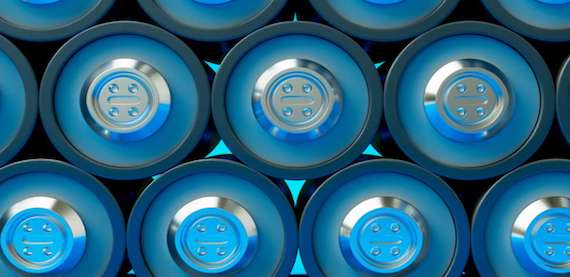The anode (or negative electrode) in a Li-ion battery is usually made of graphite coated on a copper foil. Graphite is an allotrope of elemental carbon. Since each carbon atom emits an electron, those electrons can move freely. Therefore, graphite is an electrical conductor and can reach 25,000 S/cm2 in a single crystal plane.
1. What is the negative electrode material?
The types of negative electrode materials include carbon materials, alloys, silicon-based materials, transition metal oxides and transition metal chalcogenides, etc., all of which have unique physical and electrochemical properties. Among them, negative electrode materials are commonly used carbon negative electrode materials, such as lithium ion battery negative electrode materials: graphite, petroleum coke, and pyrolytic resin carbon are all carbon materials.
The negative electrode material is the carrier of lithium ions and electrons during the charging process of the battery, and plays the role of energy storage and release. It mainly affects the first-time efficiency, cycle performance, and rate (fast charge) of lithium batteries. In the battery cost, the anode material accounts for about 7%.
2. Lithium battery anode material
Lithium-ion battery anode materials are mainly divided into carbon-based materials and non-carbon-based materials.
1) Carbon-based negative electrode materials can be specifically divided into negative electrode materials such as graphite, hard carbon, soft carbon and graphene, among which graphite materials can be further divided into natural graphite, artificial graphite and mesocarbon microspheres;
2) Non-carbon-based anode materials include titanium-based materials, silicon-based materials, tin-based materials, nitrides, and lithium metal.
3. Graphite anode plate
Graphite anodes include anode plates, anode rods, and large cylindrical anodes used in various solution electrolysis and molten salt electrolysis (such as electrolysis to produce metallic sodium).
In the electrolytic cell, the stage where the current flows into the electrolyte from here is called a graphite anode plate. In the electrolysis industry, the anode is generally made into a plate shape, so it is called a graphite anode plate, which is widely used in electrophoresis, wastewater treatment, and industrial anti-corrosion equipment. Or for special materials.
In the electrolysis industry, graphite anode plates have been used as anodes for more than one hundred years. Graphite anode plate has the advantages of high temperature resistance, good electrical and thermal conductivity, easy machining, good chemical stability, acid and alkali corrosion resistance, and low ash content; it is used for electrolysis of aqueous solution to produce chlorine, caustic soda, and electrolysis of salt solution to produce alkali ; For example, the application of graphite anode plate can be used as a conductive anode for electrolytic salt solution to produce caustic soda. The application of graphite anode plate can be used as a conductive anode in the electroplating industry, and is an ideal material for various electroplating; the electroplated products have the advantages of smoothness, fineness, wear resistance, corrosion resistance, high brightness, and not easy to change color.
4. Lithium battery raw materials
Lithium battery raw materials mainly include positive and negative electrode materials, electrolyte, separator and current collector. Among them, the positive electrode material is the most critical raw material for lithium batteries, including lithium carbonate and lithium hydroxide.
5. Lithium-ion battery anode materials
Lithium-ion battery anode material characteristics:
1. Excellent porosity and conductivity.
2. Good durability and light weight.
3. Low cost.
4. The voltage matches the preferred cathode.
6. What is the material of lithium battery diaphragm
The lithium battery separator is located between the positive electrode material and the negative electrode material in the battery structure and is immersed in the electrolyte. This position and its core function: to separate the positive and negative electrodes of the battery, to prevent short-circuiting of the two electrodes, and to ensure the smooth passage of ions in the electrolyte.
The lithium-ion battery separator is generally a good insulating material, which provides a channel for the migration of lithium ions in the electrolyte. According to different physical and chemical properties, lithium battery membranes can be divided into: woven membranes, nonwoven membranes (non-woven fabrics), microporous membranes, composite membranes, separator papers, laminated membranes, etc. Although there are many types, the current commercial lithium battery separator materials mainly use polyethylene and polypropylene microporous membranes.
The five major materials of lithium batteries are mainly composed of: positive electrode material, negative electrode material, electrolyte, separator and battery shell material.


